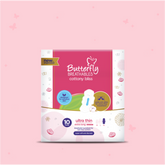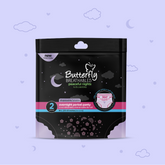Period pads, among the plethora of menstrual product options available, stand out as the most commonly used. Their widespread popularity can be attributed to their convenience, accessibility, and hygienic nature. However, delving into the history of women's pads raises intriguing questions about their evolution over time. Have today's pads always resembled their modern counterparts? This journey of transformation, mirroring the evolution of many industries, unveils a captivating narrative that deserves exploration.
Let's put a full stop to your curiosity!
It is noteworthy that the evolution of women's pads has been a fascinating journey spanning several centuries. The need for menstrual hygiene solutions has existed throughout human history, but it was only in the last century that menstrual pads underwent significant developments. Here's an overview of the key stages in the evolution of women's pads
Ancient times!
The history of period pads goes a long way down in history. It has been mentioned as early as the 10th century in Ancient Greece, where a used menstrual rag is mentioned.
In historical times, women used various materials as absorbents for women's pads for periods. Archaeological evidence suggests that ancient Egyptian women used papyrus and other plant fibres as early forms of menstruation and maternity pads.
Other than this, it is also believed that long before the disposable cotton pads for periods were invented, most women used items like rags, cotton, or sheep’s wool in their underwear to stop the leak of blood. In those days, even items like knitted pads, rabbit fur or grass were also used by women to handle their periods.
In other cultures, materials like wool, grass, and even animal skins were used to manage menstrual flow. In short, anything that could help them manage the flow was used before the idea of a proper menstrual pad took birth.
The idea of the first-period pad!
The invention of period pads is quite an interesting tale. It all started by nurses in France when they were looking for effective methods to stop excessive bleeding. Interestingly, the first pads were made using wood pulp bandages. The result was astonishing as it was super absorbent and cheap enough to be disposed of afterwards.
Commercial manufacturers loved it. They borrowed this idea and made a proper product out of it. The first ever disposable pad available for purchase came as early as 1888. It was known as the Southball pad.
A step towards a modern form of a pad
Soon after, women's pads started to take more recognizable forms. Women in Europe and the United States began using cloth pads, which were washable and reusable. These pads were often bulky and required frequent cleaning, but they were a significant improvement over earlier methods. This was a leap towards the modern form of pads that we see.
But, a little more than any new product, it was opposed by the users at first. The reason was that women did not feel comfortable asking for it, so in the early 1920s, the name was changed to Nupak.
As soon as the product was introduced, it was a hit in books but being too expensive, most of the women continued using the traditional methods. Where it could be afforded, women were not comfortable asking for it. The product took a long time before being an obvious choice for women.
The early 20s was a breakthrough!
In the 1920s-1930s Kimberly-Clark introduced the first mass-produced disposable pad, named "Kotex," in the 1920s. Initially, these pads were advertised discreetly, using euphemisms to refer to menstruation. By the 1930s, menstrual pad advertising became more direct and open.
The initial phase of cotton sanitary pads was introduced in the form of cotton wool or similar fibrous rectangle covered with an absorbent liner. But, these were extremely difficult and odd to use and had no solution for leakage issues.
Soon afterwards in the 1970s, there was a shift towards more natural and eco-friendly menstrual products. Some women began using reusable cloth pads again, reflecting a desire for more sustainable options.
Late 20th century
Technological advancements in the late 20th century led to the development of thinner and more absorbent materials, making disposable pads more comfortable and efficient. The introduction of adhesive strips on the back of pads also improved their ease of use.
The modern era
In recent years, the menstrual product market has seen even more innovation. Menstrual pad companies have introduced pads with wings to improve leakage protection, organic and eco-friendly materials to cater to environmentally conscious consumers, and new designs for increased comfort and discretion.
Just like Butterfly has a wide range of sanitary pads in Pakistan. You can have a look at Butterfly Breathable Ultra-Thin Cottony Sanitary Pads. These advanced sanitary pads for periods are used by many women across the country. It promises cottony-soft comfort as it has a soft top sheet and is suitable for sensitive skin as well. For easy period management with leak-free protection, it offers cotton wings and side leak guards so you can stay worry-free throughout the day.
Let's conclude!
The evolution of women's pads encapsulates a story of ingenuity, resilience, and progress. From humble beginnings, this indispensable menstrual product has transformed to meet changing needs and aspirations. The pads brands in Pakistan like Butterfly are making every effort to bring comfort, freshness and confidence to you on your period days. You can go through our website and can order your favourite product today!
It is also interesting to know that the evolution of women's pads continue to progress as technology, sustainability, and women's health needs drive innovation in the menstrual hygiene industry. The main goal has always been and still is to provide more accessible, comfortable, and environmentally friendly options for women during their periods.









